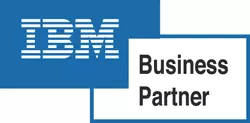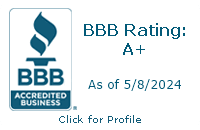How you can sell more effectively, even when your deliverables have intangible or soft benefits – and where Personal Accountability fits in.

Selling is hard. Don't believe anyone who tells you otherwise.
Why Selling is Hard ...
Selling products is hard – yet at least there's a tangible item someone can see before making a purchase. Selling services is harder – yet there's frequently a deliverable, such as a will or a financial plan, which someone has already experienced or which can be shown in a generic or sanitized format.
Selling services – such as process improvement or systems integration – with intangible deliverables and hard-to-quantify results? That's the hardest of all the sales, because:
- The deliverables – such as a revised process, or a software application – are intangible.
- The results – such as improved processes, or increased user efficiency – are hard to quantify.
- The linkage between deliverables and results is virtually impossible to demonstrate before the project is actually completed.
- The project delivering all this is custom-tailored for a client's unique circumstances.
I know this, because that's what I've been doing for nearly 25 years – selling services with intangible deliverables and "soft cost savings" results.
Continual Improvement in Selling Services

Selling. There are often negative connotations associated with "selling." Many times, these are warranted, because no one – myself included – likes receiving a "hard close," being manipulated, or being sold something they didn't need. Yet, there's great truth in the statement, "Nothing happens until someone makes a sale."
So, what's a person like me to do, who needs to generate revenues to keep things running? I've personally done several things:
- Applied the wisdom in the saying, "An interested introvert can be a better sales person than an interesting extrovert." Why is that? Because the extrovert will talk mostly about himself, while the introvert will ask questions – high-quality questions, and lots of them. Read more about interested introverts here.
- Read and studied various topics such as "solution selling," "complex sale," "consultative selling," and the like.
- Studied various resources on how to quantify "soft benefits" – that is, benefits which do not directly or immediately drop to the bottom line – and begun quantifying such benefits using a "Value Audit" for a particular project.
- Learned about and applied IMPACT, the EXCELLENT process from The Brooks Group.
- Done my best to analyze what works – and what does not – in our entire business development efforts.
I've always thought we do a solid job in all those areas, especially the last one – yet, I was blown away by some of the ideas and insights Skylar Mearing, our current Manager of Marketing and Business Development, made and recently shared with me.
- Targeting Relationships – Our advertising dollars have bought awareness, yet have not brought measurable results – thus, in 2014, we are repurposing those amounts to more focused and personal activities.
- Best Months for Obtaining New Clients – We analyzed when prospects said "yes" and became clients. Our best month, by far – January. The second best, by a wide margin – March. All other months? About the same.
- Networking – Our new clients have largely been obtained because people – mainly decision-influencers, though sometimes decision-makers – at a business knew me.
Goals for Selling in 2014
So how are we going to use these ideas and insights to improve our business development efforts? We need to ensure our activities are:
- Effective – Determine what works, and drop what doesn't.
- Performed Efficiently – Determine ways to leverage limited time and budget ... because time and budget are ALWAYS limited.
- Performed in Sufficient Quantity – Estimate how many of what activities are needed to achieve the desired sales, and ensure these numbers are met and exceeded.
- Aligned with Our Overall "Funnel" Goal – I view selling as a funnel, with a decreasing number of items at each level, and thus ...
- A number of touches (in person, on the phone, or by email) yields ...

- A smaller number of meetings, which leads to ...
- An even smaller number of potential projects, yielding ...
- A still smaller number of companies currently looking to improve their business, and which ultimately results in ...
- A smaller number of companies who say "yes" to a project.
- A number of touches (in person, on the phone, or by email) yields ...
More specifically, we will ensure our target number of activities are performed efficiently, clarify our service line descriptions, develop a plan of "touches" by group, track the touches, and evaluate their effectiveness.
All in all, our goal for 2014 is to improve our business development results, by changing things we do or how we do them. We will consciously experiment to determine what actions or techniques are more effective than others – and then revise the number and timing of our activities accordingly.
How Will We Get All These Things Done?
We have estimated we need 65 referrals to new companies to meet our 2014 revenue goals. This is a lot of referrals for a small company to achieve. What's our plan for meeting our referrals goals?
- Enlist Others – Enlist the help of others like you – and I am doing just that via this e-newsletter.
- Make It Easy – Make it easy for others to make referrals to us.
- Be Accountable – Provide monthly updates on progress.
"Sales Are Not Controllable, Only Influenceable" – True, Or Not?
"Controllable" vs "Influenceable" is a variation on my ongoing "Personal Accountability" theme – you can only Control Yourself, and thus you can only Control Inputs in an attempt to Influence Outputs. Various activities are inputs to the sales process. The ultimate output of the sales process? A sale, and getting this requires someone to say "yes" to a proposed project. You can't say "yes" for them, and – though you might wish otherwise – you can't force anyone to say "yes."
Am I wrong in thinking this way? Maybe, because every person who has managed our business development efforts all initially wanted to set a sales quota ... and all initially saw the futility of this, and came around to my way of thinking.
Are we the only company having this type of business development challenge? I thought so, until earlier this month.
I was talking with the CEO of a client, whose business is built solely on made-to-order projects of sophisticated automation equipment. We were talking about how we each go about getting business, and I realized – he and I have EXACTLY the same sales challenges, and we approach them EXACTLY the same way, by holding the responsible persons directly accountable for activities and only indirectly accountable for sales.
"I'm Not in Sales" – Actually, You Are
Perhaps you're thinking, "Okay, Todd, this is all well and good – for someone in Selling. I'm not." Granted, you might not be in the "Sales Department" – yet that doesn't mean you don't sell. You are selling when you:
- Pitch an idea for a new project to your manager.
- Ask your boss for a more flexible work arrangement.
- Try to get your teenager to start doing homework BEFORE 10:00 pm.
"Okay, I'm in Sales – Now What?" Focus on What You CAN Control
As you consider what you can control in your sales challenge, I recommend using the IMPACT framework from The Brooks Group:
- Investigate – Do your homework and investigate both your prospect AND yourself:

- Determine your best "prospect" (this may already be known, if it's your manager, boss, or teenager) and what he or she likely wants.
- Investigate YOURSELF to determine what YOU truly want to accomplish.
- Meet – Meet with your prospect and determine what he or she wants.
- Probe – Ask probing, relevant questions – get beyond "shallow."
- Apply – Show how your wants align with your prospect's wants.
- Convince – Lead the prospect into discovering your proposal's benefits.
- Tie-It-Up – Summarize commitments and action steps by both you and your prospect, and gain agreement to move forward with your proposal.
For a fuller explanation of this method, I highly recommend the outstanding book Sales Techniques, by Bill Brooks, as well as the services of The Brooks Group.
Personal Accountability – Controlling What You Can
I often see people sell themselves short by buying into the myth of "No Control." Remember,Personal Accountability is focused on the ONLY thing you can control – yourself. Thus, in selling, what you CAN control is:
- Investigate – The quality of the homework you perform.
- Meet – The topics you discuss when you meet. (Hint: Avoid small talk.)
- Probe – The depth of the questions you've prepared to ask, and your follow-on questioning during the meeting.
- Apply – The preparation you've done to see things from your prospect's point of view.
- Convince – How well you link your wants and those of your prospect.
- Tie-It-Up – How accurately you record commitments and action steps, how clearly you summarize them at the end of the meeting, and how well you honor your commitments and action steps.
In Closing
Cracking the sales code is hard – trust me, I've been doing this almost 25 years and know this from experience. I've also come to realize "difficult" is not the same as "impossible." Thus, for every one of those 25 years, I've pushed my team and myself to do a better job selling each year – and, by and large, I believe we have. Selling is still not easy, yet it's becoming easier and more predictable.
Sincerely yours,

Todd L. Herman







